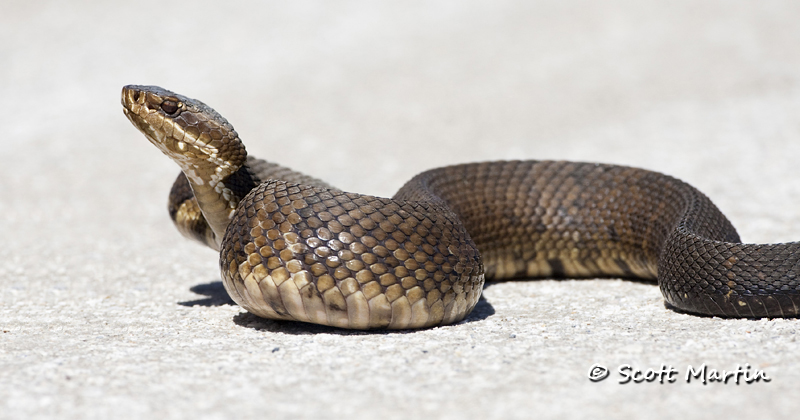
by Scott Martin Photography | May 25, 2011 | Blog, Wildlife
While wandering around the Viera Wetlands in March of this year, we found something new photograph, a Water Moccasin. It was a pleasure to see this snake, which was surprisingly large at about four feet in length or perhaps even a bit longer. Deb remained in the car for safety while I got down on the road to get a nice low angle from which to take photographs. It was necessary to move a couple of times as the snake came within the minimum focus distance of the 500mm lens I was using at the time.
It was only after talking with some other people who wandered by that I found out the identity of the snake and also that Water Moccasins were actually pit vipers and venomous. After doing some research I found that Water Moccasins primarily feed on amphibians, other snakes, fish, small mammals and even birds, all of which are found in abundance at the Viera Wetlands. Predators of the Water Moccasin include Snapping Turtles, large wading birds such as Cranes, Herons and Egrets, as well as Eagles, Owls, and Alligators. Many of which are also found at Viera.
Although this was the first time I’d ever seen a large snake at Viera, I guess they occupy an important part of the local ecosystem. I will certainly be more careful the next time I lay down on the embankments in an attempt to get that perfect bird shot!

.
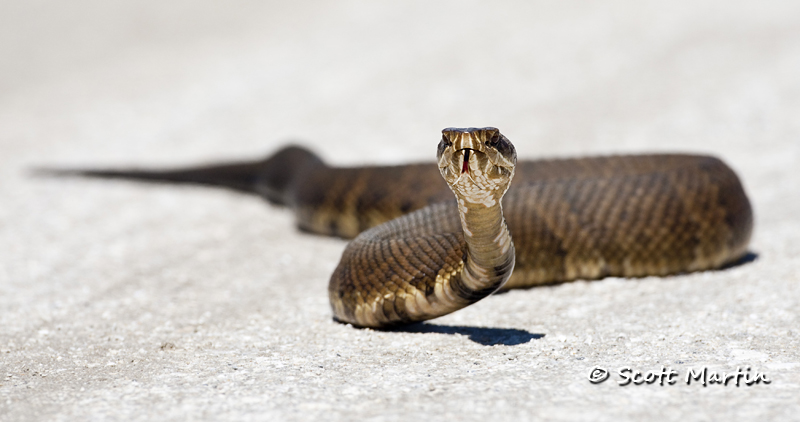
.
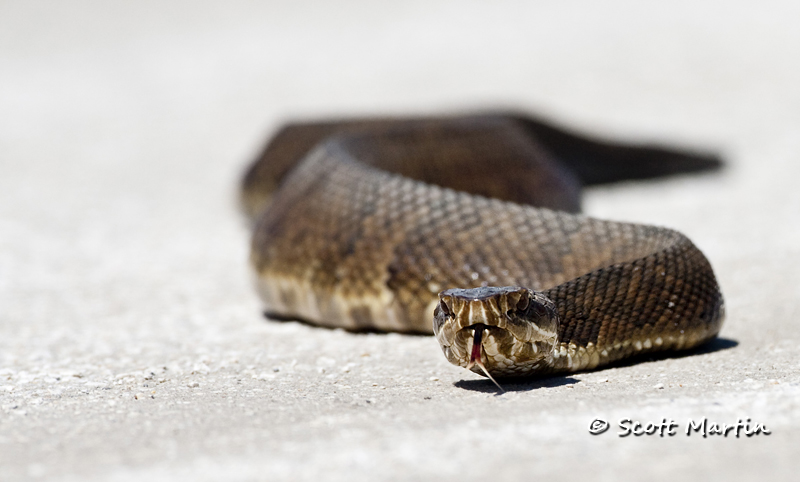
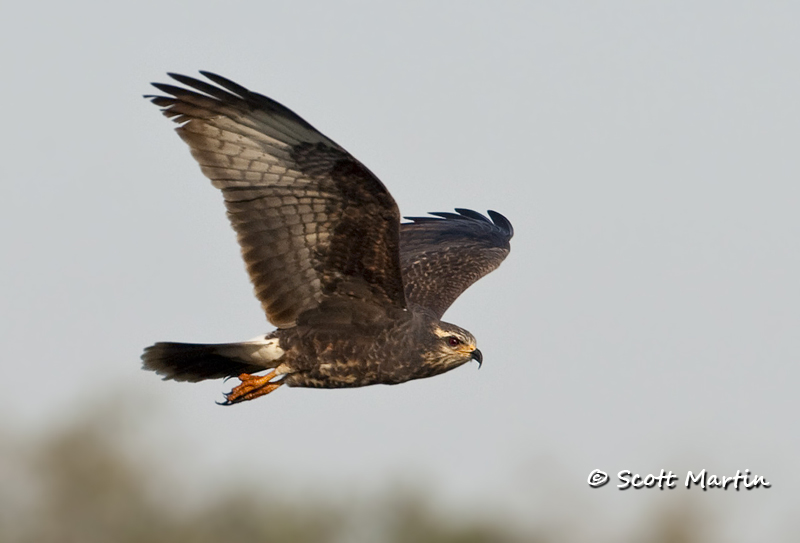
by Scott Martin Photography | May 18, 2011 | Birds, Blog, Raptors
For those of you who follow this blog regularly, please accept my apologies for all the Snail Kite entries. You will be glad to know I’m getting near the end of them. Snail Kites have been a fascination for me since first photographing one at Joe Overstreet in Florida about five years ago. This year we chartered a boat on Big Lake Toho and were blessed with great light and lots of Snail Kites to photograph. The following is another series of in flight images, all taken hand held with a 500mm lens from Captain Rick’s boat.
The Snail Kite is a locally endangered species in Florida where it is estimated that there are less than 400 breeding pairs. They eat Apple Snails almost exclusively.

The next shot is of an adult male with some nest building material. The adult male is a wonderful steel blue colour.
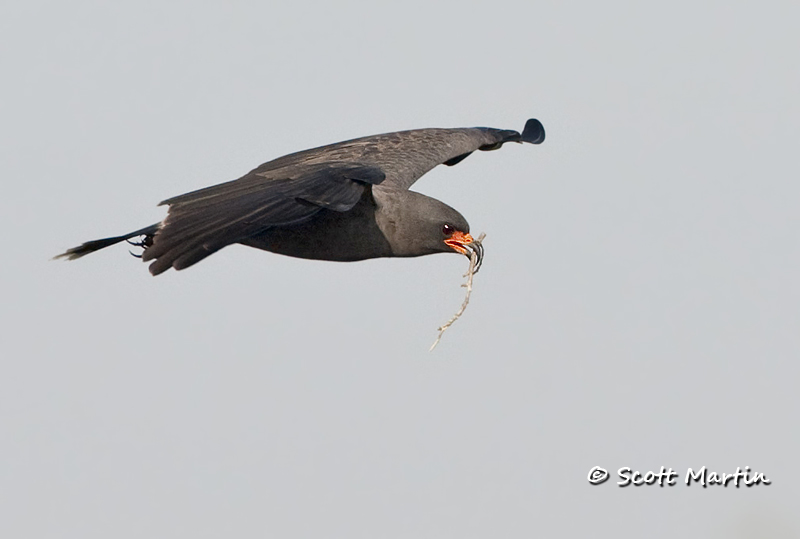
.
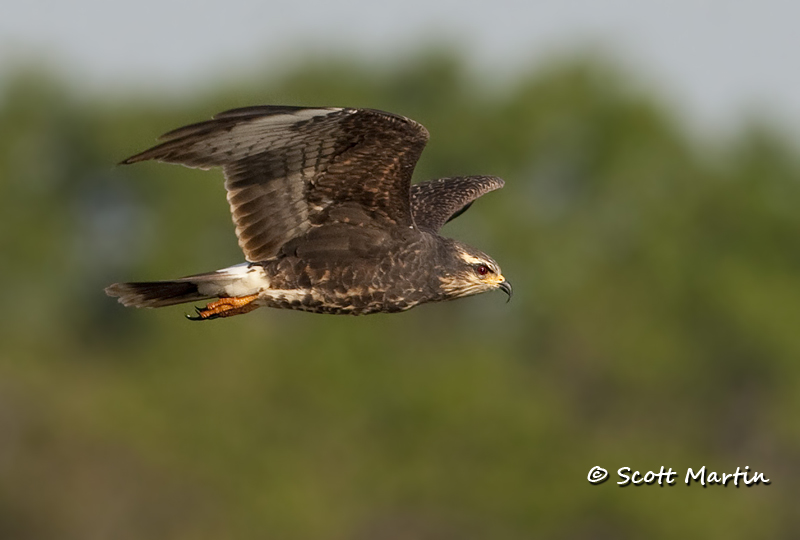
The next image shows the Snail Kite in its classic hunting pose, flying low to the water surface with its head down looking for the Apple Snails clinging onto the reeds below.
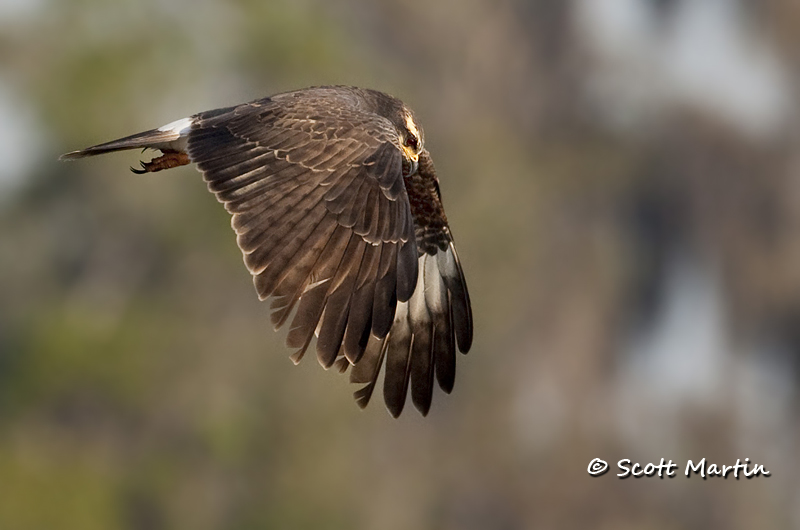
.
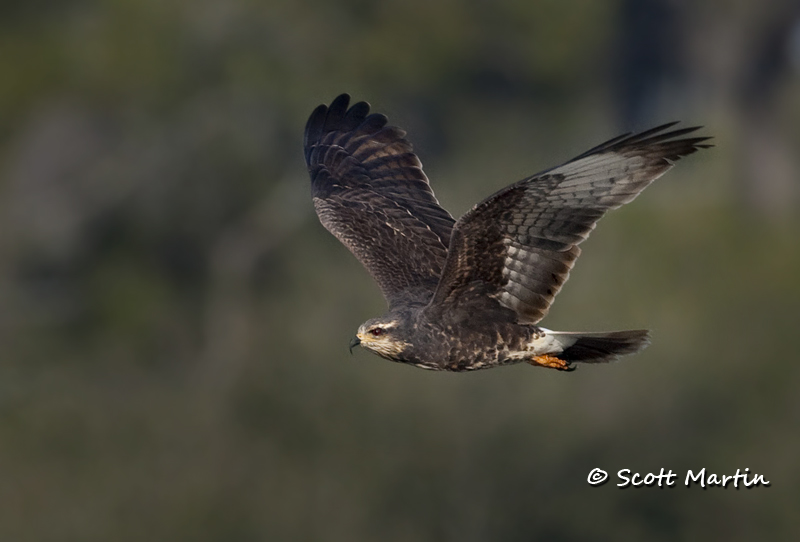
More images can be found in the Hawks, Falcons & Kites Gallery
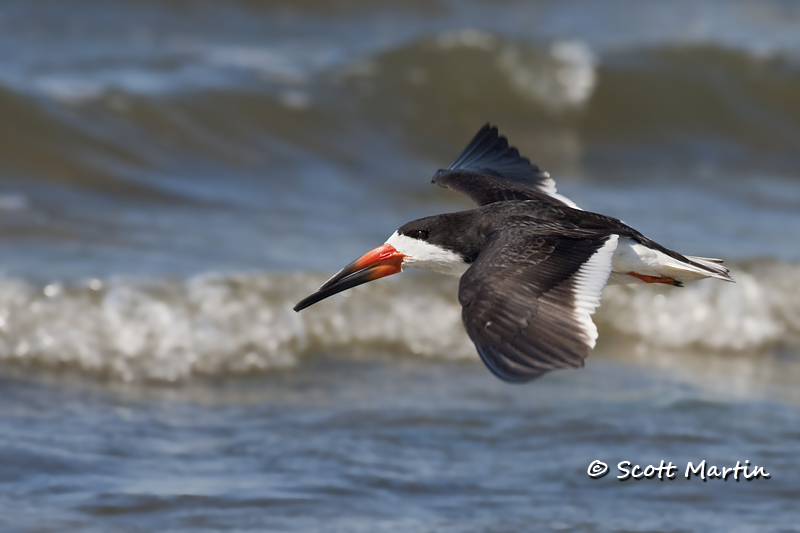
by Scott Martin Photography | May 16, 2011 | Birds, Blog, Shore Birds & Waterfowl
The Black Skimmer is a peculiar looking bird because of its uniquely designed bright orange, black tipped bill which features a lower mandible that is much longer than the upper (the only bird in North America with such a beak). The skimmer feeds on fish and shrimp which it forages by flying low over the water with its lower mandible slicing through the water. When it senses a fish or shrimp it clamps its jaw tight and seizes its prey. While skimming, the water flowing into the lower jaw exits out through an exhaust vent at the base of the bill which is an amazing phenomenon to see.
The Black Skimmer is a fairly large bird approximately 18-20″ in length with a wing span up to four feet in an adult. At birth the mandibles are the same length however by the time they have fledged (about four weeks old) the lower mandible is already nearly 1 cm longer than the upper.
The Black Skimmer lays its eggs in a simple scrape on the ground, usually in a beach area, and rarely has any nest material associated with it. The incubation period is 21-23 days with both parents taking part in the process. One of the biggest threats to skimmer nests is via public encroachment by people who inadvertently trample the eggs. For this reason known skimmer nesting areas are cordoned off during the spring nesting season.
The following images were taken in March of this year at the Merritt Island National Wildlife Refuge in Florida while Deb & I were waiting to photograph a rocket launch from the Kennedy Space Center which is also located on Merritt Island.
This in flight shot shows the unique bill design for which the Black Skimmer is notorious.

A group of these birds are known as a “Conspiracy”, “Embezzlement” or “Scoop” of Black Skimmers.
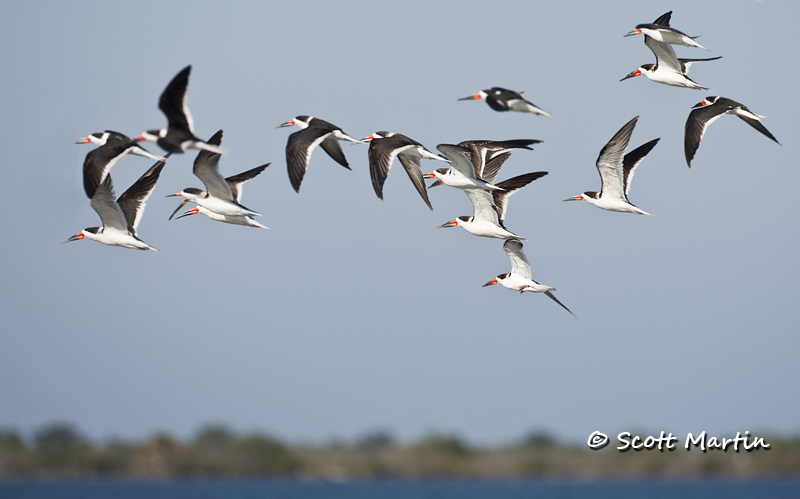
More Black Skimmer images can be seen in the Gulls, Terns & Skimmers Gallery
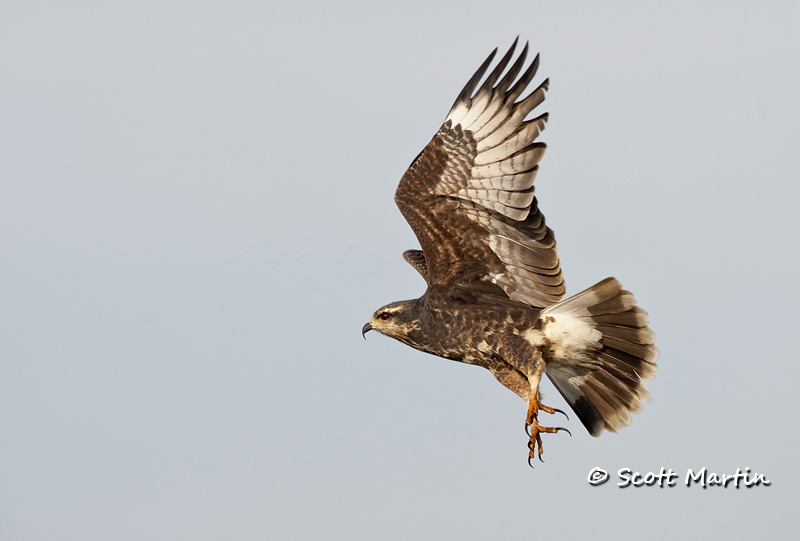
by Scott Martin Photography | May 11, 2011 | Birds, Blog, Raptors
Deb and I leave early this morning to head back to Florida for a few days during which we will be visiting the J.N. Ding Darling National Wildlife Refuge on Sanibel Island. Ding Darling is known for its migratory bird populations and although we will be a little late to see the migratory birds we are hoping to get some good shots of the resident birds. It’s a new spot for us to visit and we know it will be a pleasure to explore a new NWR.
Below are some new Snail Kite additions to the Hawks, Falcons & Kites Gallery on the website. These in flight shots were all taken in March of this year on Lake Toho, just south of Kissimmee in central Florida. Our guide and captain of the boat we chartered was excellent at knowing where to find the Snail Kites as well as positioning the boat to keep the morning light on the proper side of the birds! It’s always a huge added bonus when your guide is also a photographer 🙂

.
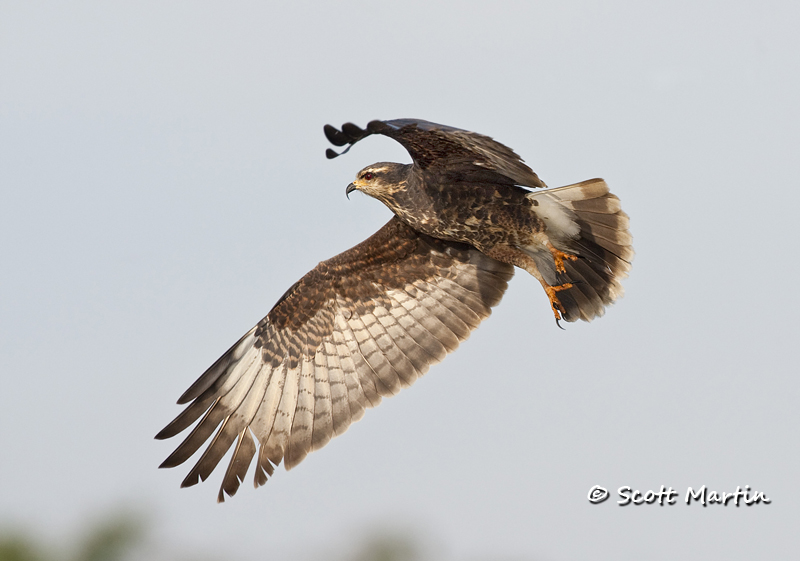
Sorry about the copyright covering the wing tips on this next image, however I use a batch command to add the copyright & watermark to a number of images at once and didn’t notice this until it was too late to change.
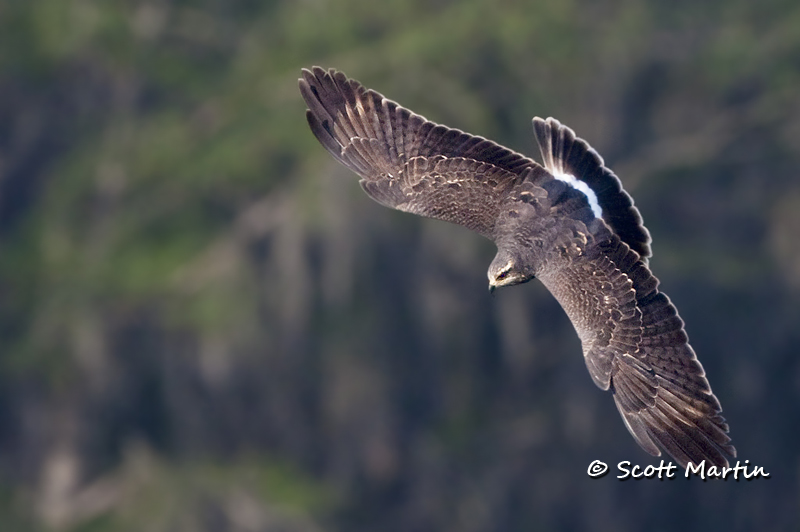
.
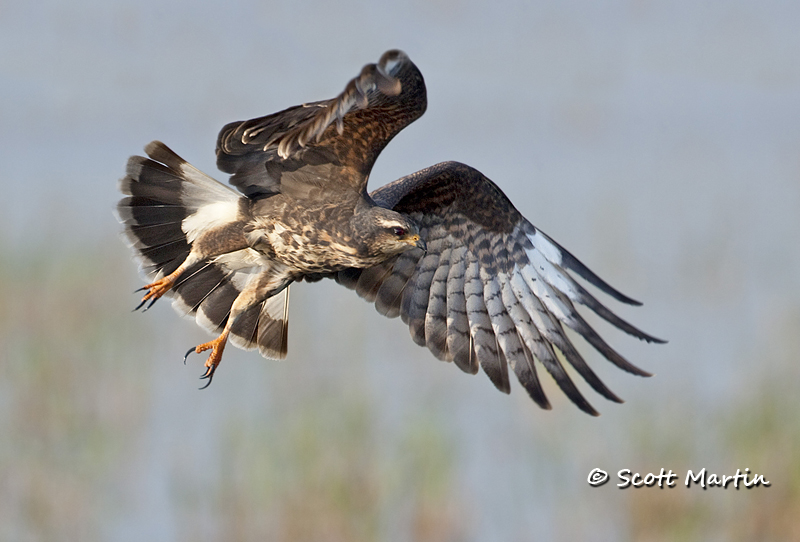
.
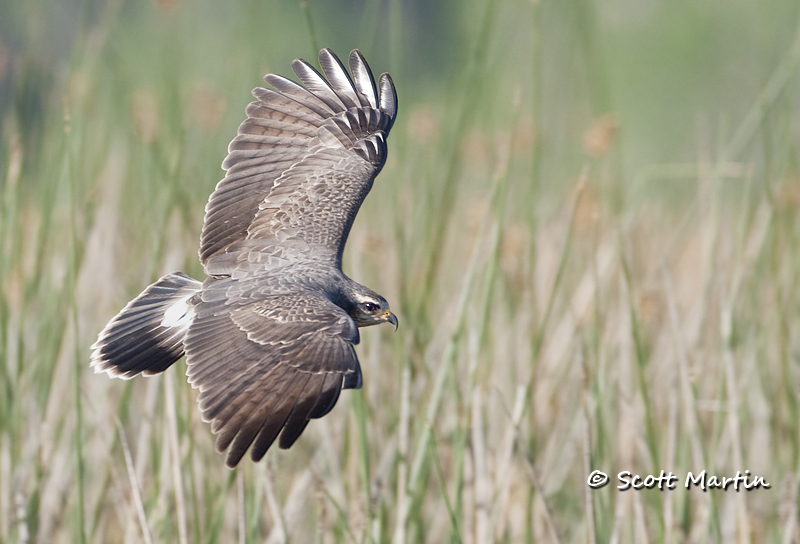
.
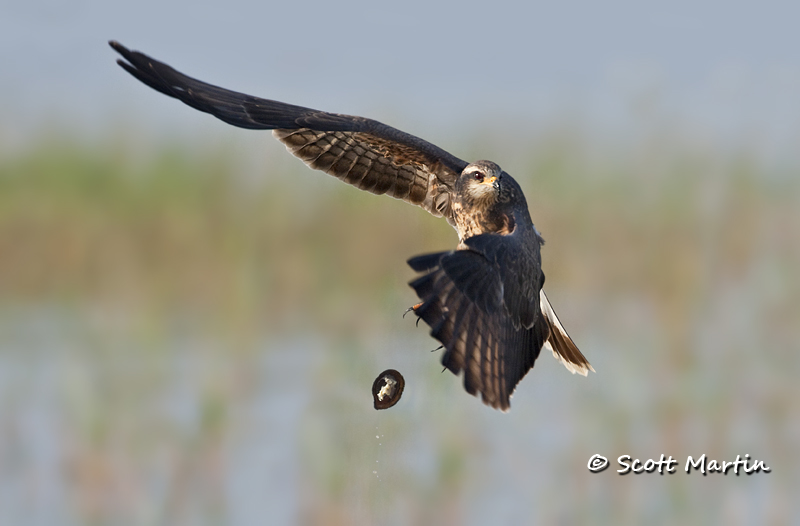
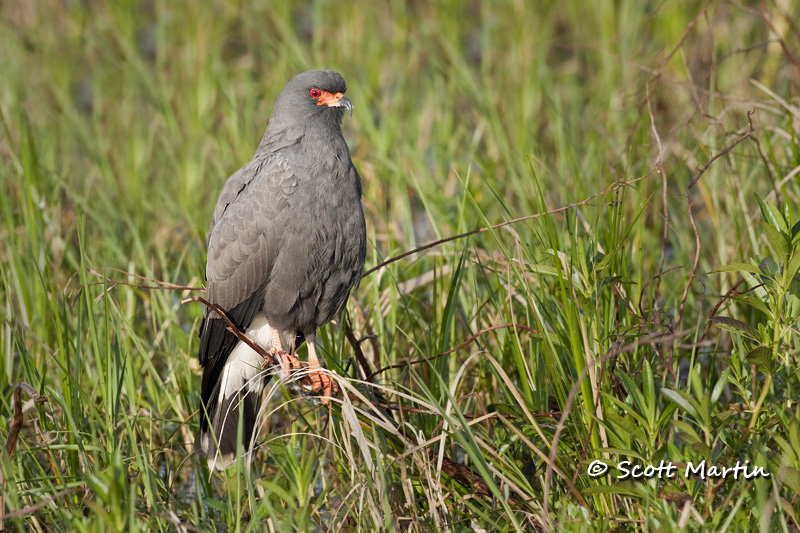
by Scott Martin Photography | May 8, 2011 | Birds, Blog, Raptors
Our family has spent the March Break holiday for last number of years in Kissimmee, Florida. March is a great time for bird photography as many of the birds are nesting and vibrant in their breeding plumage. One of our ‘target birds’ this year was the locally uncommon Snail Kite and we were fortunate to be able to photograph many of them while out on a boating charter in Big Lake Tohopekaliga or Lake Toho for short.
Snail Kites feed almost exclusively on Apple Snails which are only found in a few Florida lakes at a population level sufficient to support the kites. Lake Toho and Lake Okeechobee are two such lakes. The Florida population of Snail Kites was reduced to 20 by 1964 largely because of marsh draining and hunting, especially at Lake Okeechobee. Fortunately the population rebounded such that by 1983 an estimated 700 were living in Florida.
All of the images in today’s post were taken hand-held from a boat in Lake Toho.

The next in flight shot shows the typical ‘head down’ posture the Snail Kite assumes while searching for snails. They fly rather slowly and rely on their keen eye sight to spot the Apple Snails on the reeds below.
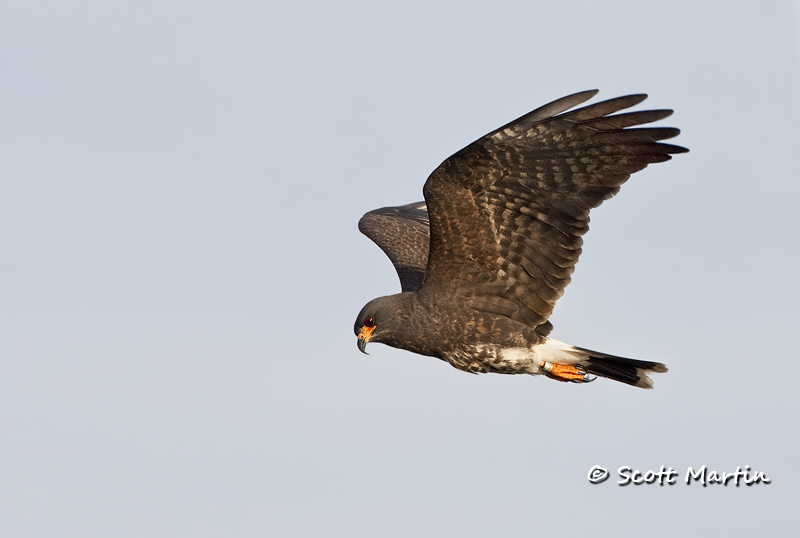
This image, although similar to the environmental shot above, is a full frame image taken in a vertical orientation at a distance of about twenty feet. It was a real treat to be so close to such an uncommon bird.
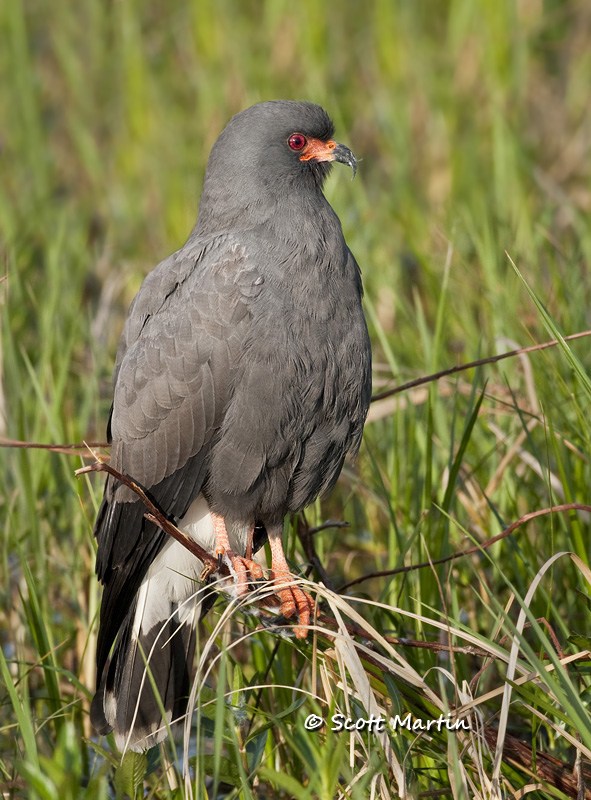
A rather big no-no for bird photographers is to post images of birds on man-made perches, so please forgive me for including this “bird on a pole” shot however the kite’s expression was simply too good to pass up!!
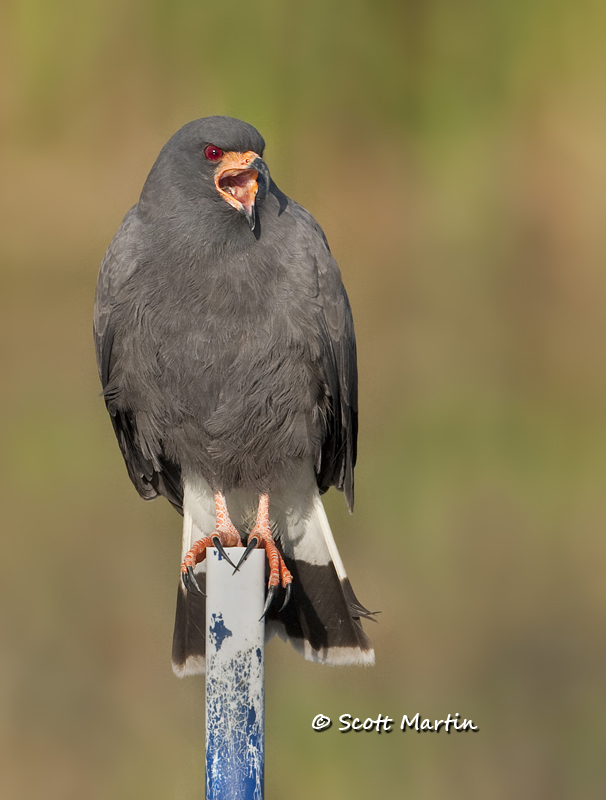
Happily the three hours we spent on Lake Toho resulted in a number of ‘keepers’ which I will try to post over the next couple of weeks.
Blessings and Happy Mothers Day to all the moms……you are loved!


























Follow Scott Martin Photography